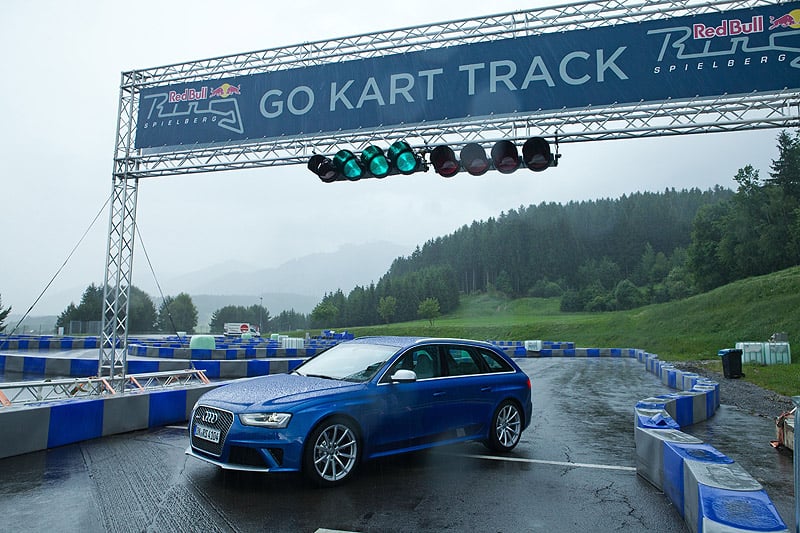
But then came the RS5, a coupé built on the new platform that now also underpins current A4 derivatives and, despite having that same RS4/R8 engine, it was not nice at all. The fidgety, rock-hard ride and wooden steering were the main reasons, but seldom has such power, achieved at such a stratospheric crankshaft speed, provided such a tainted experience.
Slightly worryingly, the new RS4 shares those RS5 underpinnings, but improvements have been wrought (calming down the springs, mainly). But then there's another dodgy gene to consider, that which made the first RS4 of two generations ago – the twin-turbo V6 one, if you recall – a thoroughly bland and almost entirely forgettable way in which to reach enormous speeds. Even the RS5 engaged you more than that car did.
So, new RS4: want to take a bet on how good it is? Recent Audi signs are promising, it must be said, with the S6 and S7 proving quite engaging given their size and luxury, and the new A3 hatchback turning out to be a genuinely enjoyable driving machine. Those new S-models use the twin-turbo V8 also found in the Bentley Continental, but the latest RS4 – unlike BMW's new M5 – doesn't abandon atmospheric aspiration to follow this turbocharged path. Its V8 retains the architecture of its predecessor, having nothing in common with the frugal twin-turbo unit, and with it the ability to reach enormous crankshaft speeds as the power pours forth.
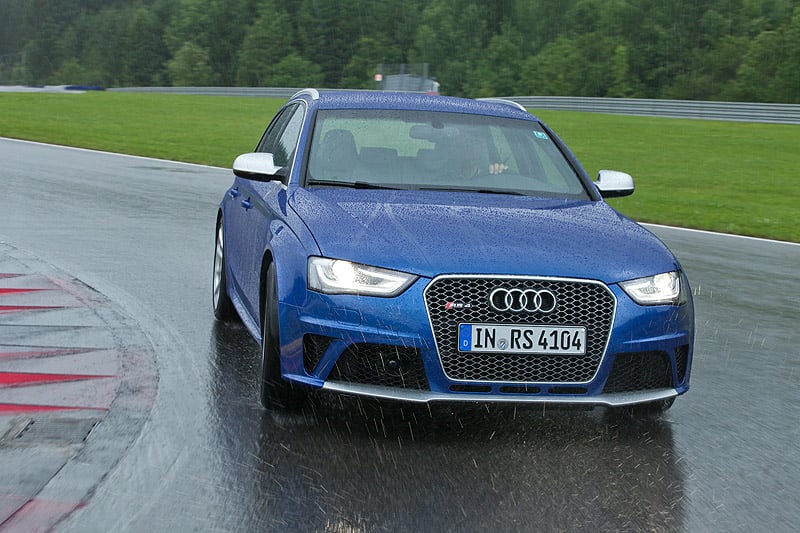
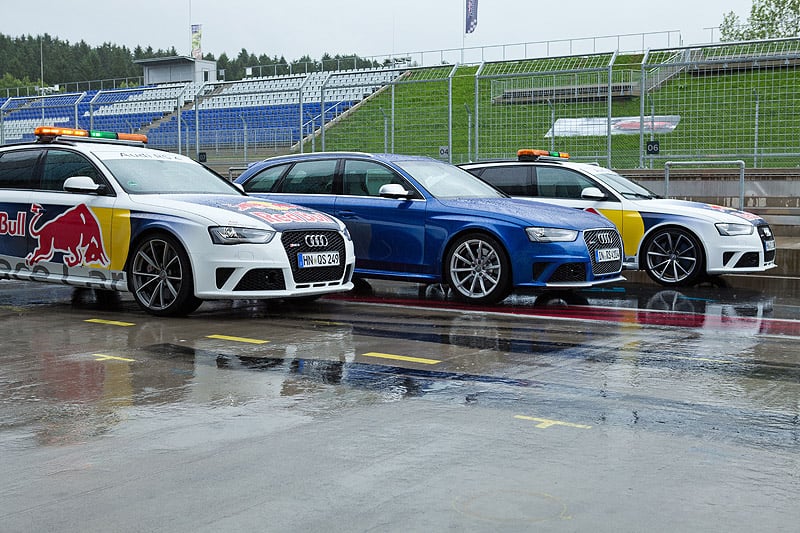
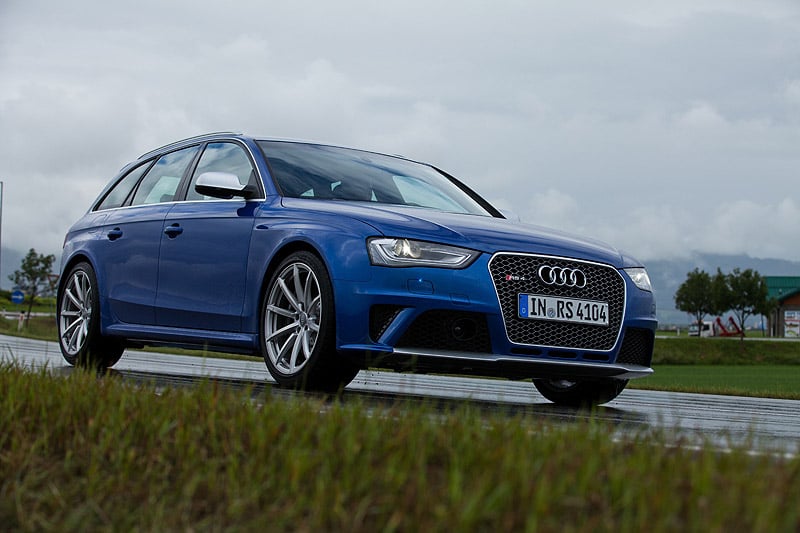
This time there's even more of that, 450bhp against 420, although the bore and stroke are as before. This power peak arrives at 8250rpm, up from 7800rpm, but torque is identical at 317lb ft. Previously, that torque-max came at 5500rpm; now there's a plateau either side, with full leverage on offer between 4000 and 6000rpm.
Audi will tell you this is a new engine, but that is true only in that most parts have been modified to reduce friction and improve internal flow of liquids and air. There's an on-demand oil pump, for example. The headline efficiency figures are that official average fuel consumption (as if any RS4 owner would drive with the required feather foot) has improved from 20.9 to 26.4mpg, with CO2 correspondingly falling from an embarrassing 324g/km to a manageable (though still 'gas-guzzling') 249g/km.
This smacks of turning water into wine, but the reality is that most of the improvement comes from the standard fitment of a seven-speed, double-clutch transmission, with a long-legged top gear, in place of the previous car's six-speed manual. Thus the RS4 can change gear automatically at the most efficient times, and run a chunk of the test in seventh, instead of being obliged to stay in particular gears at particular times as manual cars are. In other words, don't expect such a vast economy improvement in the real world, because all the new RS4 (like many other cars) is doing is exploiting the system.
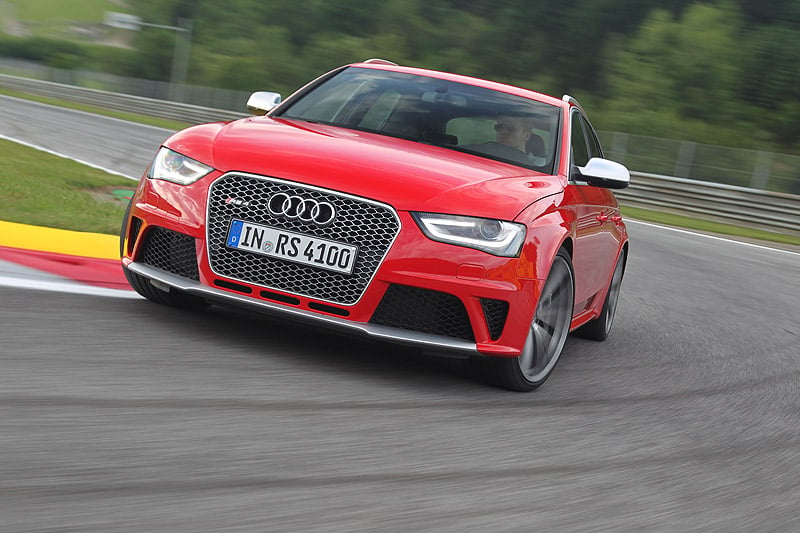
Will there be a manual version? There will not, because no suitable gearbox now exists that can both handle the power and fit the current Audi driveline layout for longitudinal engines, which places the front driveshafts ahead of the clutch in an effort to reduce the front overhang. Besides which, customers apparently prefer two pedals and a pair of paddles.
Another thing there won't be is a saloon version, the form in which the previous RS4 first emerged, because Audi considers the RS5 to cover the car-with-a-boot base adequately. So the new one is Avant-only, as was the first RS4 and the five-cylinder, Porsche-honed RS2 before it.
All right, I'll end the suspense. The new RS4 has inherited the right characteristics. It feels like a new version of the old one, with all the aural and physical drama that implies, and the RS5 is but a side-turning. (Quattro Gmbh engineering chief Stephan Reil assures us that the RS5 is now just as good, thanks to its latest modifications, and admits that all was not quite right before. Encouragingly, Audi now uses British roads during dynamic development.)
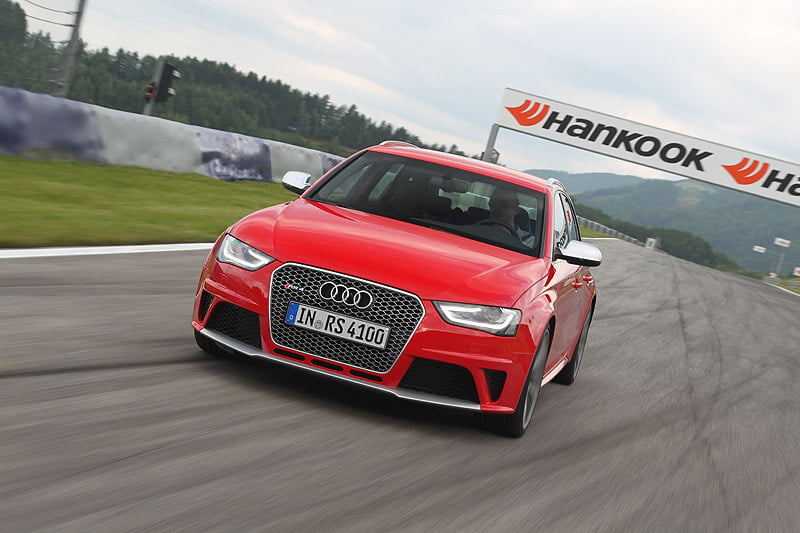
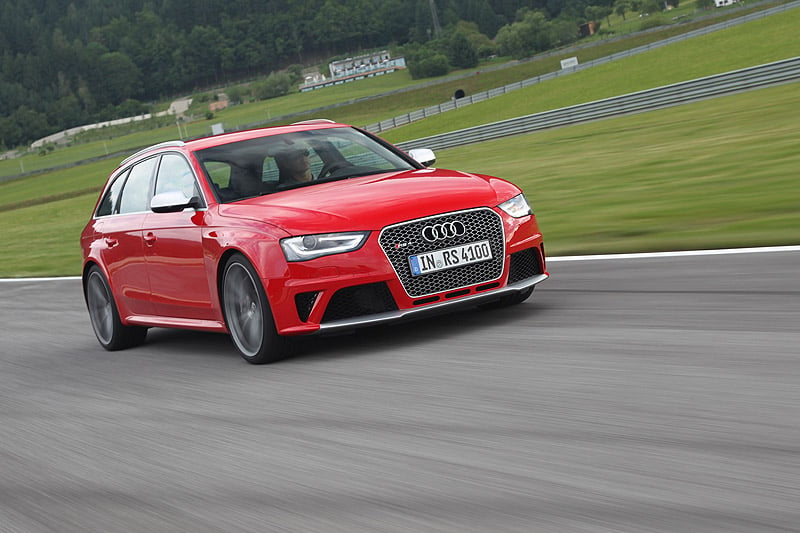
So, the flared-out wheelarches, the satin-aluminium finish on the door mirrors and the front spoiler blade, plus the giant 19in wheels – or 20in if you must – don't flatter to deceive. This is a proper, serious performance car which thrusts up the road with a blattering, howling intensity guaranteed to crack the stoniest of faces.
First encounter is on the roads near the Zeltweg racetrack, nowadays known as the Red Bull Ring because the sickly drink has seeped deeply into Austrian motor sport. The roads are wet, but with four-wheel drive – nominally 60 per cent biased to rear, as before – no fear is felt. The steering is electro-hydraulic; many of we critics try to convince ourselves that the best new pure-electric systems are now as good, but the RS4's easy, accurate, unforced responses remind us they mainly are not. And the giant brakes, the front ones with wavy-edged discs and eight-piston calipers, are indefatigable. Carbon-ceramics are an option for the heavy-footed.
As ever on a new Audi, there's a Drive Select system to tailor the responses of suspension, steering, engine and so on. Our test cars here also have the optional Dynamic Ride Control, or DRC, which uses interconnecting oil pipes between diagonally opposite suspension dampers, the flow controlled by valves to ensure a mix of longitudinal suppleness (for a good ride) and lateral tautness (to keep the Audi level and responsive in corners). This was standard on the previous RS4, but now you have to specify it either individually or as part of a £2250 Sport package deal which includes the 20in wheels, a louder exhaust system and Dynamic Steering.
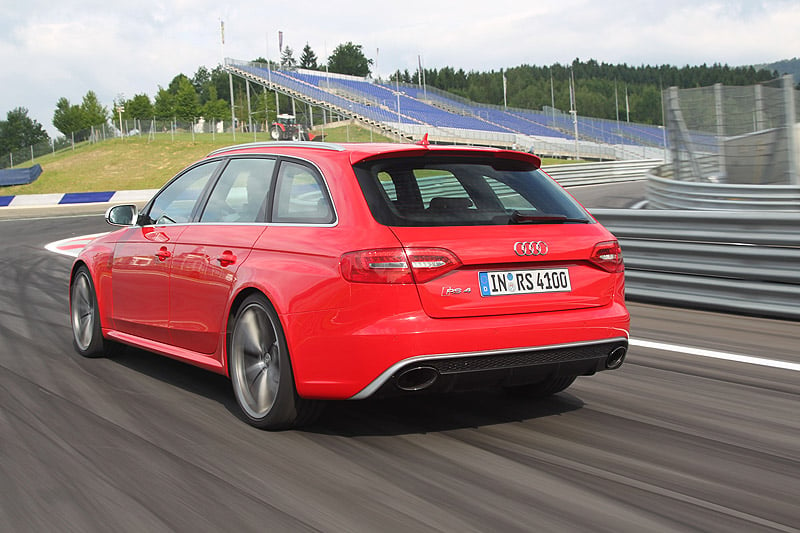
New to the RS4 is the 'sports differential', which diverts torque to the rear wheel with more grip, instead of braking the one with less, plus a torque-vectoring system for all wheels which does do that braking thing when required. The result is a car which munches through bends like a really quick BMW but with better steering feel, loading up the outside rear wheel as the power piles on, flicking up and down through the gears with brilliant downshift blips and low-frequency blatters on each upshift.
The automatic transmission mode works very intuitively, if a shade hyperactively in Sport, and the manual mode is so crisp that it could almost make you not miss having a proper gear lever. And as the engine howls towards that 8250rpm power peak, which is also the rev limit (although the engine feels as though it would leap happily to 9000rpm or more), the sound is that granular wail that you hear from a Formula One car's on-board camera, even though the RS4 engine doesn't have an F1 car's flat-plane crankshaft with its different firing intervals.
'Dynamic' mode in the Drive Select makes more noise more of the time, as well as sharpening everything else, but you'll use it for no more than a minute on a normal road because you'll be fed up with the suspension's chop and fidget. 'Auto', unsurprisingly, is the best one-shot road setting, in which the ride settles nicely to feel much as the old RS4's did. Or you can go to 'Individual' and set everything to Dynamic except the suspension, which you put in Comfort. That combination works very well.








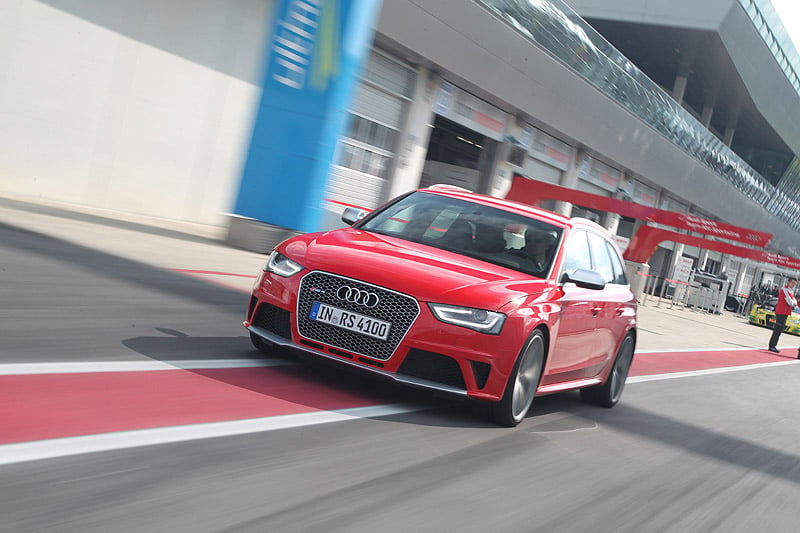
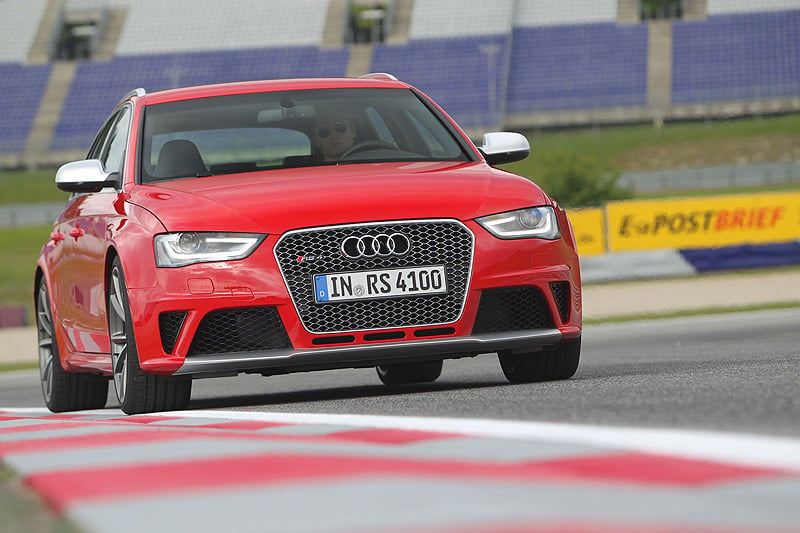
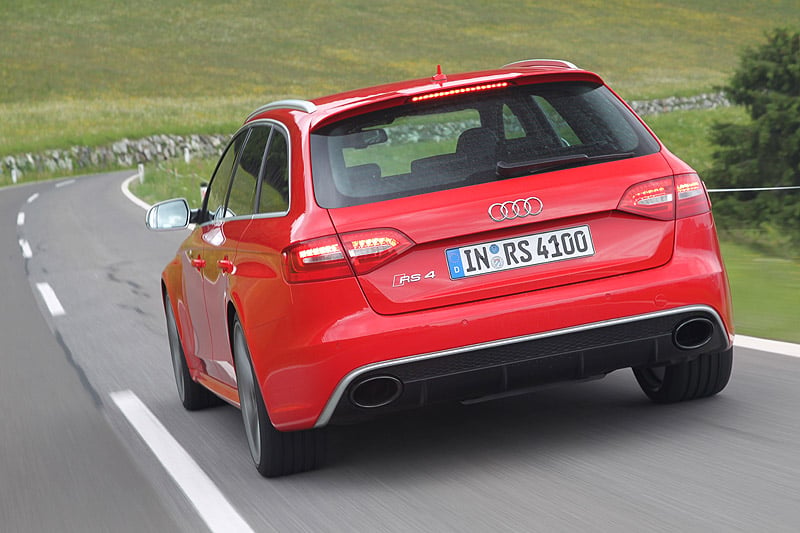
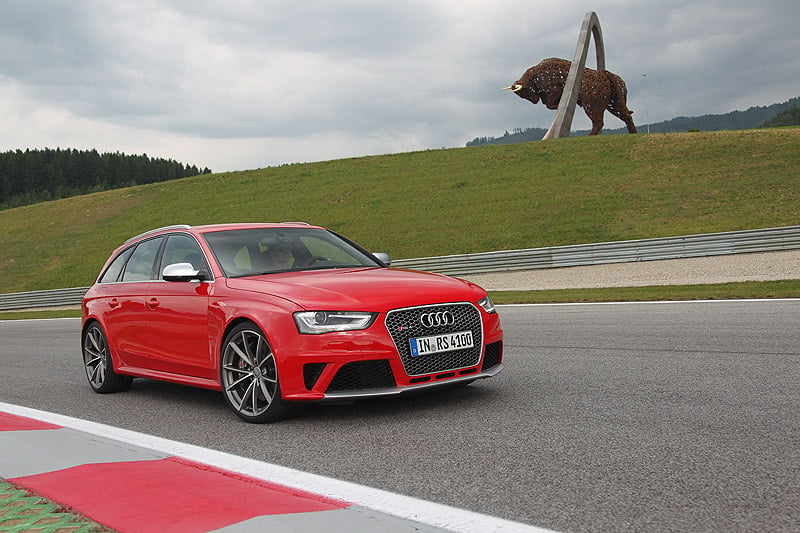
Pace? From launch to 62mph takes 4.7 seconds, as it did in the old car. Given the new one's extra power and quicker gearshifting, it should do better but complaining might be churlish. Top speed is the usual 155mph, but you can pay an extra £1300 to have a computer rewrite a line of code and end up with a 174mph maximum. That's an excellent little earner. One feature from the previous RS4 which hasn't made it to the new one, incidentally, is the seats' automatic and rather unsettling squeezing of your thighs and ribcage when in Dynamic mode, or Sport as it was called back then. You can still increase the lateral crush manually, though.
Now, the Red Bull Ring, or Osterreichring as it once was. It's wet and, in places, very slippery thanks to the lubricating effect of rubber left by the previous weekend's DTM race. Unlike the RS4 I've just driven on the road, the one I'm now in has Dynamic Steering which speeds the steering ratio at low speeds and further on lock. In Dynamic mode (confusing, isn't it?) the Dynamic Steering is set permanently to its quick ratio, and that's how I have it on the track.
There's a long, flat-out, slightly twisty 'straight' up a hill to a hairpin, and here the RS4's V8 can howl its heart out. Gently round the hairpin, through the next bends and – where has the grip gone? Two long left-handers feel as though oil has been spilt, and the RS4 powers through with rather more of an oversteering drift than I had intended. This is a strange sensation in an Audi, but even with traction and stability controls off, the RS4 is deliciously controllable.
So I have to try a Dynamic Steering car on the road. I feared it would feel darty and unnatural, but instead it just makes the RS4 extra-agile without imparting a sense of the computer game. Even in non-Dynamic, variable-ratio mode it works well. Looks like the Sport Package is a must, then, which means your RS4 Avant will cost £57,175 instead of £54,925. And that's a fair price for the most soul-infused Audi this side of an R8.
Photos: Audi





















